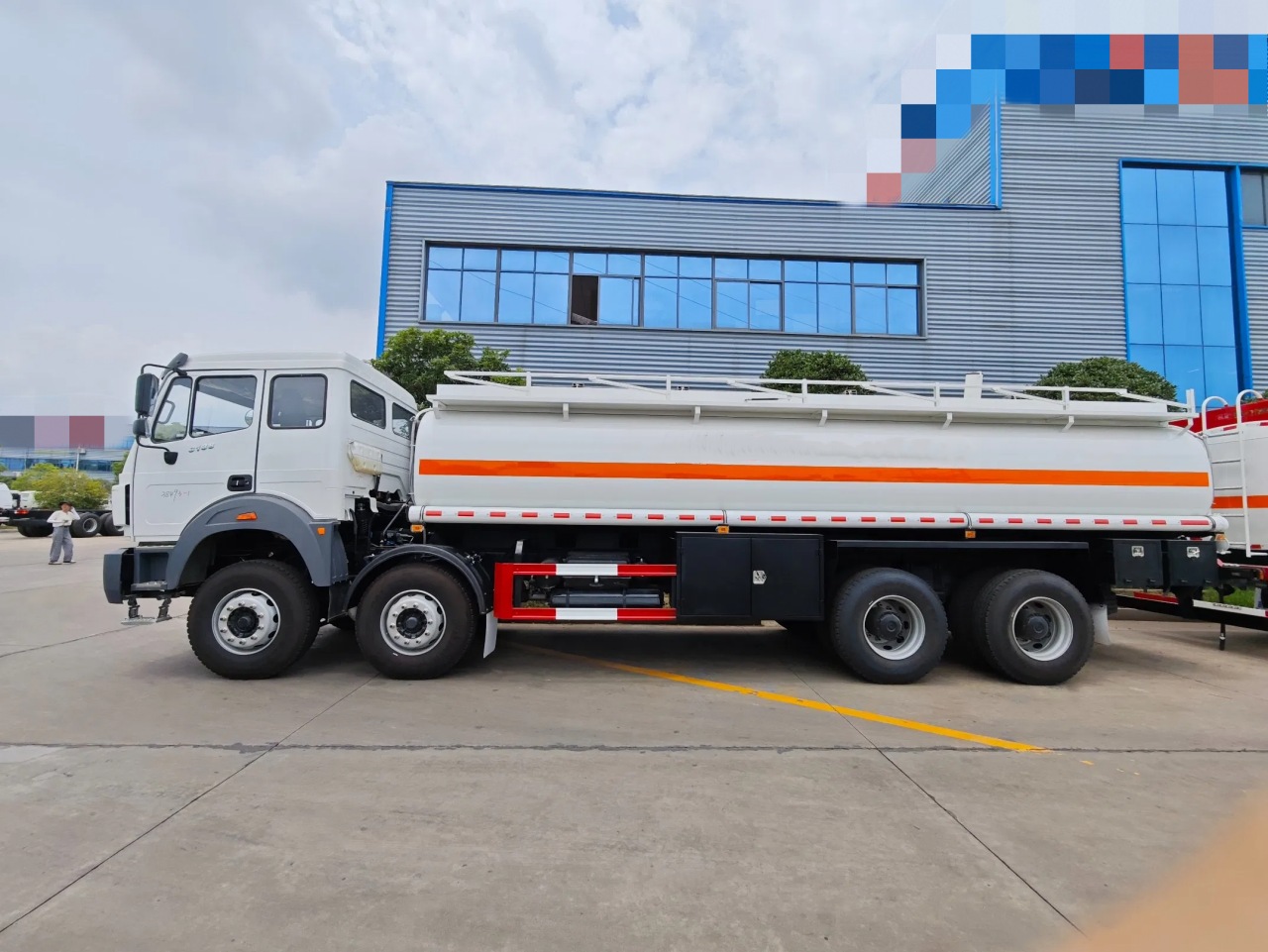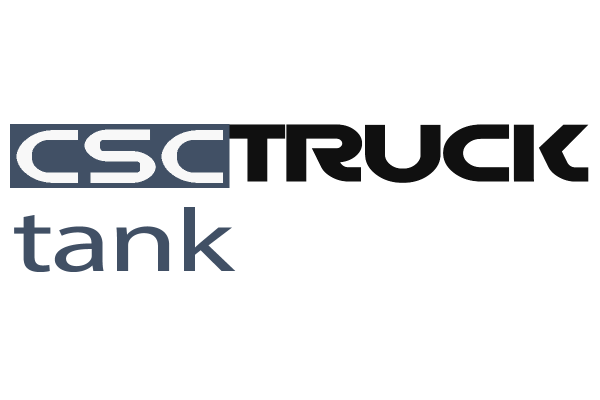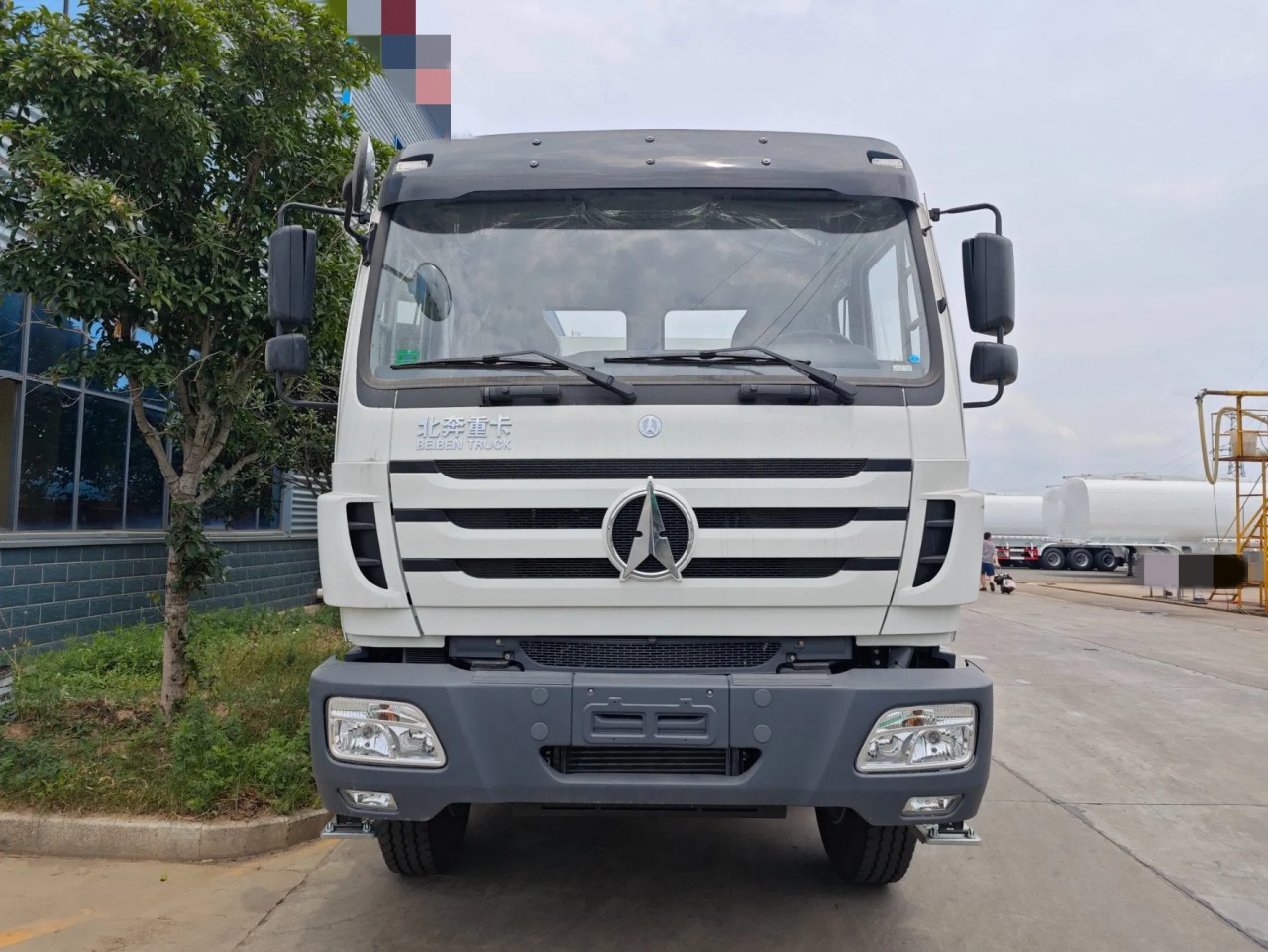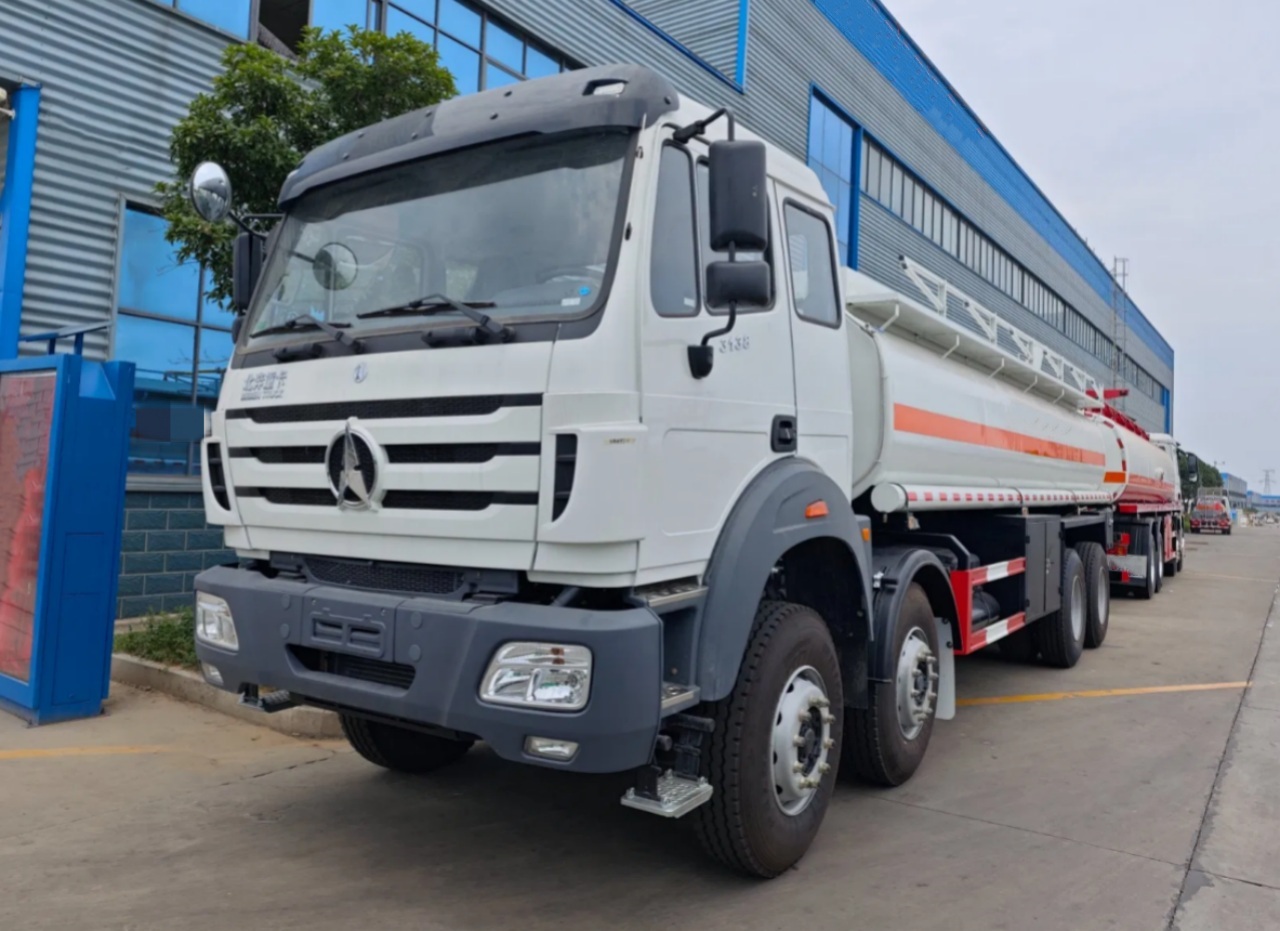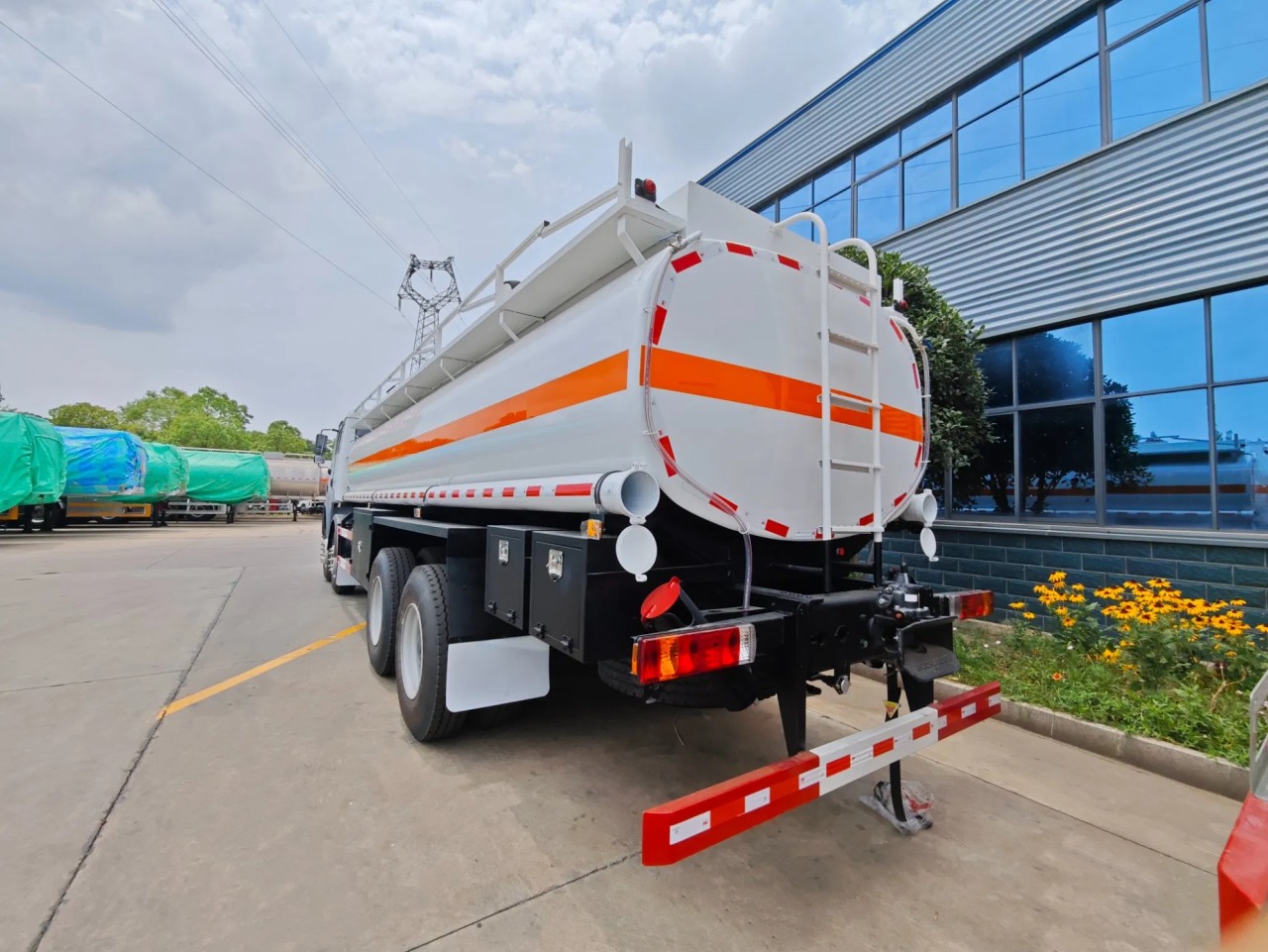Fuel is the lifeblood of global industry and commerce, and its safe, efficient, and reliable transport is crucial to keeping economies running smoothly. Among the various methods of transporting fuel, high-capacity fuel tank trucks play a pivotal role, especially for on-road delivery. These specialized vehicles are engineered to meet the logistical demands of fuel distribution, whether it’s supplying remote fueling stations, supporting large-scale construction and mining operations, or replenishing fleets across highways and urban centers.
In this article, we explore the essential role of high-capacity fuel tank trucks in modern fuel logistics, examining their design features, operational advantages, safety mechanisms, and the evolving technologies that continue to shape this critical sector.
1. The Role of High-Capacity Fuel Tank Trucks in Fuel Distribution
Fuel tank trucks, also known as fuel tankers or fuel bowsers, are mobile fuel carriers designed to transport gasoline, diesel, aviation fuel, and other petroleum-based liquids. While rail and pipeline systems dominate long-distance fuel transport, fuel tank trucks offer unmatched flexibility and last-mile delivery capability.
High-capacity fuel tank trucks are typically used for:
- Delivering fuel to rural or inaccessible areas where pipeline infrastructure is lacking.
- Serving fuel stations with limited storage capacity.
- Supporting military, mining, and construction operations requiring mobile fuel delivery.
- Distributing aviation fuel at airports and airfields.
With capacities ranging from 15,000 to 45,000 liters (4,000 to 12,000 gallons), these vehicles are capable of transporting large volumes of fuel in a single trip, improving logistical efficiency and reducing operating costs for fuel distributors.
2. Design and Construction Features
High-capacity fuel tank trucks are highly specialized vehicles engineered for the safe and efficient handling of flammable liquids. Key components include:
a. Tank Structure and Material
Tanks are typically constructed from aluminum alloy, stainless steel, or carbon steel. Aluminum is widely favored for its corrosion resistance, light weight, and fuel economy advantages. Stainless steel, on the other hand, is often used for transporting aviation or chemically sensitive fuels due to its non-reactive properties.
The tank itself is divided into multiple compartments to carry different types of fuel or manage the liquid surge during braking and turning. Internal baffles further stabilize the liquid, enhancing safety during transit.
b. Chassis and Suspension
The truck’s chassis must support heavy loads and provide stability under dynamic conditions. Most high-capacity tankers are built on reinforced heavy-duty truck chassis from brands like Volvo, Scania, Freightliner, and Dongfeng. Air or leaf spring suspension systems are used to manage road vibrations and preserve tank integrity.
c. Pumps and Meters
An integrated fuel delivery system includes a pump (typically PTO or hydraulic-driven), flow meters, hoses, and dispensing nozzles. Precision meters ensure accurate fuel delivery, which is crucial for both accounting and safety.
d. Safety Components
- Emergency shut-off valves
- Grounding cables
- Anti-static systems
- Spill containment mechanisms
- Fire extinguishers and flame arrestors
These components work together to minimize the risk of fires, explosions, and environmental contamination during loading, transit, and unloading.
3. Operational Efficiency and Logistics Advantages
One of the main benefits of high-capacity fuel tank trucks is their ability to streamline operations for fuel suppliers and end-users. Here are several ways they enhance logistical efficiency:
a. Bulk Delivery Capacity
With the ability to transport tens of thousands of liters in 1 trip, high-capacity fuel tankers reduce the number of deliveries needed, cutting down transportation costs and emissions.
b. Route Flexibility
Unlike pipelines and rail, fuel tank trucks can reach virtually any location accessible by road. This flexibility is especially valuable in regions with poor infrastructure or during emergency responses.
c. Multi-Product Delivery
Compartmentalized tanks enable the simultaneous transport of various fuel grades, allowing 1 vehicle to serve multiple delivery points efficiently.
d. Onsite Refueling
High-capacity tankers can function as mobile fueling stations, refueling equipment, generators, or vehicle fleets directly at construction sites, mines, or farms.
4. Safety and Regulatory Compliance
Transporting flammable materials presents inherent risks, and strict regulations govern the operation of fuel tank trucks. Compliance with standards such as ADR (Europe), DOT (USA), and GB18564 (China) is mandatory, encompassing vehicle design, driver certification, and operational procedures.
Regular inspections, pressure testing, and preventive maintenance are essential to ensure the vehicle’s integrity. Drivers must undergo specialized training in hazardous materials handling, emergency response, and safe driving practices.
5. Technological Innovations in Fuel Tank Trucks
The fuel transport industry continues to evolve with advances in telematics, automation, and sustainability. Modern fuel tank trucks are equipped with GPS-based fleet management systems that offer real-time tracking, route optimization, and fuel inventory monitoring. This allows operators to reduce idle time, ensure timely deliveries, and prevent theft or loss.
Other innovations include:
- Remote Valve Control: Allowing operators to control dispensing functions from a safe distance.
- Automated Overfill Protection: Sensors that prevent spills during tank filling.
- Electric and Hybrid Propulsion Systems: Emerging in response to global emission regulations and sustainability goals.
The integration of these technologies improves safety, enhances operational control, and supports greener transport initiatives.
6. Challenges and Considerations
Despite their benefits, high-capacity fuel tank trucks also face challenges:
- Road Restrictions: Weight and size limitations can restrict access to certain areas.
- Fuel Theft and Loss: Requires advanced security systems and accurate accounting.
- Environmental Risks: Spills and accidents pose serious ecological threats.
- Rising Costs: Regulatory compliance, insurance, and fuel prices all contribute to high operating expenses.
Companies must invest in training, maintenance, and digital systems to overcome these challenges and remain competitive.
7. The Future Outlook
As global demand for fuel transport persists—particularly in emerging markets—fuel tank trucks will remain a cornerstone of logistics. However, the sector must adapt to shifting trends:
- Alternative Fuels: LNG, hydrogen, and biofuels are increasingly part of the transport mix, requiring new handling systems.
- Digital Transformation: Enhanced automation and data analytics will shape decision-making and improve efficiency.
- Sustainable Operations: The push toward carbon neutrality will drive innovation in vehicle design and fuel consumption.
Conclusion
High-capacity fuel tank trucks are indispensable assets in the modern fuel supply chain. Their unique combination of mobility, volume efficiency, and on-demand delivery capability allows them to serve a wide array of industries with speed and reliability. As technology advances and environmental demands grow, these trucks will continue to evolve, embodying the balance between performance, safety, and sustainability in fuel logistics. Fuel transport may be a centuries-old practice, but with the help of high-capacity tank trucks, it is moving steadily into the future.
